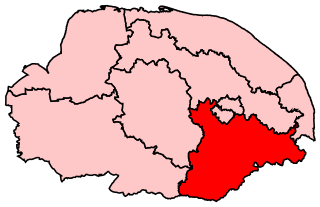
South Norfolk is a constituency represented in the House of Commons of the UK Parliament since 2001 by Richard Bacon, a Conservative.
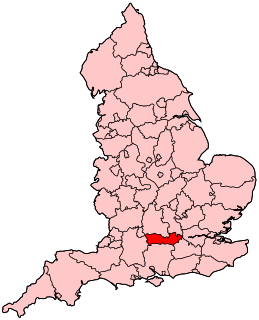
Windsor /ˈwɪnzə/ is a constituency represented in the House of Commons of the UK Parliament since 2005 by Adam Afriyie of the Conservative Party.

East Devon is a constituency represented in the House of Commons of the UK Parliament since 2019 by Simon Jupp of the Conservative Party.

Chippenham is a parliamentary constituency represented in the House of Commons of the Parliament of the United Kingdom since 2015 by Michelle Donelan, a Conservative, who also currently serves as Minister of State for Universities. The 2010 constituency includes the towns of Bradford on Avon, Chippenham, Corsham and Melksham.
London University was a university constituency electing one Member of Parliament (MP) to the House of Commons of the Parliament of the United Kingdom, from 1868 to 1950.
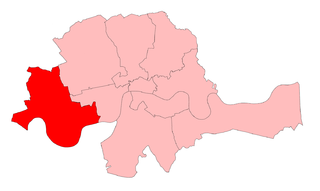
Chelsea was a borough constituency, represented in the House of Commons of the Parliament of the United Kingdom.

Accrington was a parliamentary constituency of the House of Commons of the Parliament of the United Kingdom from 1885 to 1983. It elected one Member of Parliament (MP) by the first-past-the-post system of election.

Hackney North was a parliamentary constituency in "The Metropolis". It returned one Member of Parliament (MP) to the House of Commons of the Parliament of the United Kingdom.
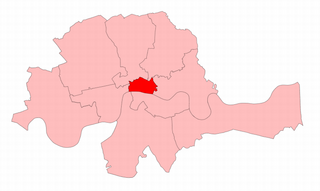
The City of London was a United Kingdom Parliamentary constituency. It was a constituency of the House of Commons of the Parliament of England then of the Parliament of Great Britain from 1707 to 1800 and of the Parliament of the United Kingdom from 1801 to 1950.

Whitechapel was a parliamentary constituency in the Whitechapel district of East London. In 1885 the seat was established as a division of the parliamentary borough of Tower Hamlets. It returned one Member of Parliament (MP) to the House of Commons of the Parliament of the United Kingdom.
Heywood was a county constituency in the county of Lancashire of the House of Commons for the Parliament of the United Kingdom. Created by the Redistribution of Seats Act 1885, it was represented by one Member of Parliament. The constituency was abolished in 1918.

Bow and Bromley was a constituency in the Parliament of the United Kingdom. Located in the Metropolitan Borough of Poplar in London, it was created by the Redistribution of Seats Act for the 1885 general election and returned one Member of Parliament (MP) until it was abolished for the 1950 general election.
East Dorset was a former United Kingdom Parliamentary constituency. It was formally known as the Eastern Division of Dorset. It was a constituency of the House of Commons of the Parliament of the United Kingdom. It was represented by one Knight of the Shire.
Finsbury East was a parliamentary constituency centred on the Finsbury district of North London, England. It returned one Member of Parliament (MP) to the House of Commons of the Parliament of the United Kingdom, elected by the first past the post system.
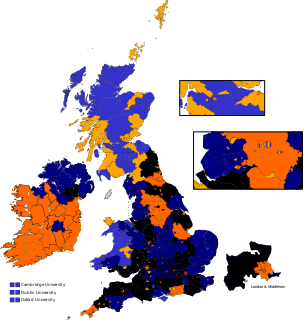
Tower Hamlets was a parliamentary borough (constituency) in Middlesex, England from 1832 to 1885. It elected two Members of Parliament (MPs) to the House of Commons of the Parliament of the United Kingdom. It was one of the first five of its type in the metropolitan area of London. It was enfranchised by the Reform Act 1832.

Marylebone was a parliamentary constituency in Middlesex, England from 1832 to 1885. The parliamentary borough formed part of the built up area of London, and returned two members to the House of Commons of the UK Parliament and was created under the Reform Act 1832. It was abolished by the Redistribution of Seats Act, 1885 which split it into 8 seats.
Portsmouth was a borough constituency based upon the borough of Portsmouth in Hampshire. It returned two members of parliament (MPs) to the House of Commons of the Parliament of the United Kingdom, elected by the bloc vote system.
Liskeard was a parliamentary borough in Cornwall, which elected two Members of Parliament (MPs) to the House of Commons from 1295 until 1832, and then one member from 1832 until 1885. The constituency was abolished by the Redistribution of Seats Act 1885.
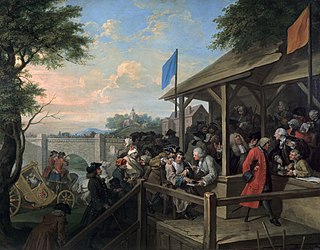
Oxfordshire was a county constituency of the House of Commons of the Parliament of England then of the Parliament of Great Britain from 1707 to 1800 and of the Parliament of the United Kingdom from 1801 to 1885. It was represented by two Members of Parliament. In 1832 this was increased to three Members of Parliament. The constituency was abolished in 1885, being split into three single member divisions.
Stamford was a constituency in the county of Lincolnshire of the House of Commons for the Parliament of England to 1706 then of the Parliament of Great Britain from 1707 to 1800 and of the Parliament of the United Kingdom from 1801 to 1918. It was represented by two Members of Parliament until 1868 when this was reduced to one.

















